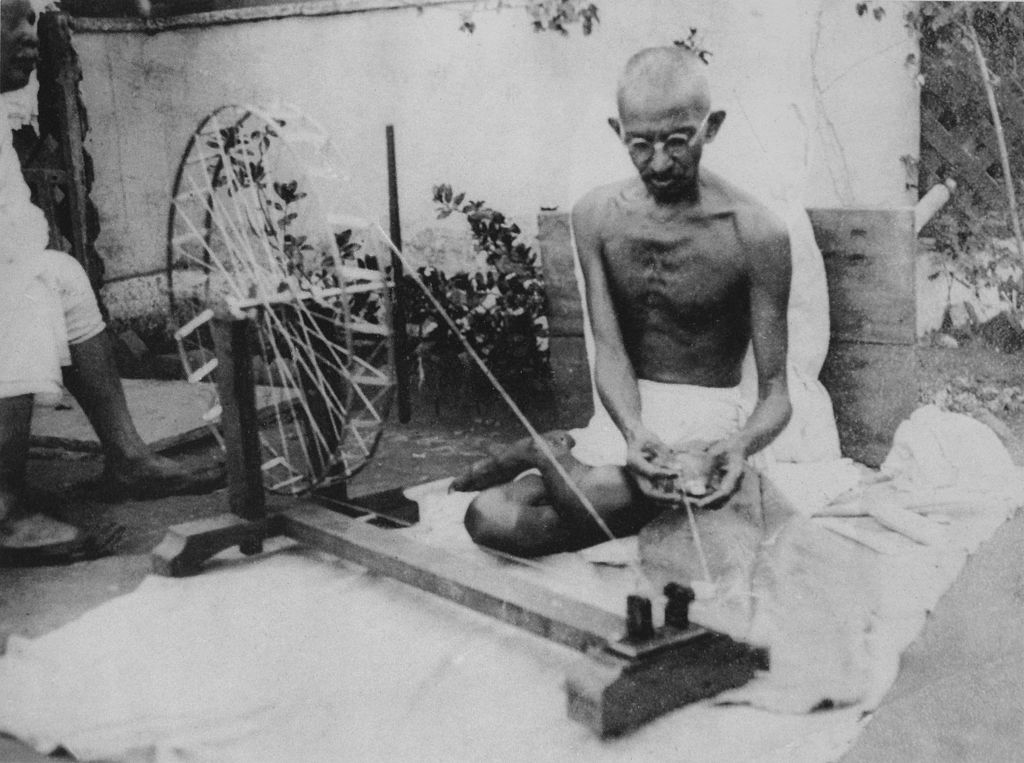History Of Khadi
History Of Khadi
The Story Of Khadi, India's Signature Fabric. Khadi – the word conjures up images of Mahatma Gandhi and the Swadeshi movement he led. Broadly speaking, khadi is manufactured in two steps: converting the fiber into yarn using tools like spinning wheels (Charkha) and then weaving the yarn into fabric using looms. There are many steps like dyeing and strengthening of the fibers which can be explored in detail. Both the spinning and weaving can be mechanized, resulting in hand-loom fabric when the first step is mechanized and mill-made fabric when both steps are mechanized. |
| History Of Khadi Fabric |
Originating in India, Khadi was initially perceived more as a movement than simply a fabric, spearheaded by Mohandas Karamchand Gandhi. He started the movement to make Indians self-reliant on cotton and to free them from the clothes that the British were selling to them at extremely high prices.
Gandhi, an iconic promoter of Khadi, helped create The All India Spinners Association, which further supported and validated the movement.
Khadi also has a long history in Bangladesh. Dating back to the 12 century A.D. Marco Polo described Khadi of the Bengal region as finer than a spider's web. The Romans were also great admirers of the Bengal Khadi Muslin and used to import great amounts of fabrics.
In 1946, Gandhi visited Noakhali on a ‘Peace Mission’. During his time there, the Ambika Kalinga Charitable Trust was formed. The Trust was later discouraged and dampened by the Pakistan government at the time.
In 1975, some years after the independence of Bangladesh, the trust was reformed and renamed as The Gandhi Ashram Trust. The Trust included income generating activities and initiatives which included the production of hand-spun khadi.
During the Mughal period, the weaves of Comilla were also known for their distinctive characteristics. The high quality sari, dhoti, lungi and gamcha production with locally spun yarns and weaves were reported by the Tripura Gazetteer in the 1890s. Weaving centres were developed in Moinamoti, Gouripur, Muradnagor and Chandina in Comilla.
Khadi and Charkha
Khadi owes its revival to the Father of the Nation, Mahatma Gandhi. He was the one who saw its potential as a tool to being self-reliant, independent and bringing villages back to life. In his words:
‘The spinning wheel represents to me the hope of the masses. The masses lost their freedom, such as it was, with the loss of the Charkha. The Charkha supplemented the agriculture of the villagers and gave it dignity.’
However, he soon understood that more than the production and sale of this handwoven fabric, it’s the acceptance of the very fabric in our own daily lives that will bring the change. Gandhi made the Swadeshi Movement synonymous with khadi. He promoted its simplicity as a social equalizer and made it the nation’s fabric.
‘If we have the ‘khadi spirit’ in us, we would surround ourselves with simplicity in every walk of life. The ‘khadi spirit’ means illimitable patience. For those who know anything about the production of khadi know how patiently the spinners and the weavers have to toil at their trade, and even so must we have patience while we are spinning ‘the thread of Swaraj.’
The ‘khadi spirit’ means fellow-feeling with every human being on earth. It means a complete renunciation of everything that is likely to harm our fellow creatures, and if we but cultivate that spirit amongst the millions of our countrymen, what a land this India of ours would be! And the more I move about the country and the more I see the things for myself, the richer, the stronger is my faith growing in the capacity of the spinning wheel.’
 |
| Gandhiji On Charkha |
Introduced with the intention of boycotting foreign goods, khadi became a national movement under Gandhiji. All India Spinners Association was launched with the intention of propagation, production and the selling of khadi in 1925. Techniques were improved upon, and employment to the scale of two lakh was created. After independence, the movement continued, and the All India Khadi and Village Industries Board was created, which later culminated in the formation of Khadi, Village and Industries Commission. KVIC today is responsible for the planning, promotion, organization and implementation of programs for the development of khadi and other village industries in rural areas with the coordination of other agencies in rural development wherever necessary.

Sabhyasachi Khadi Designer Wear
Since independence, the journey of khadi has been about maintaining a balance between traditions and modernity. Khadi stands for what’s traditional, but every tradition has to undergo change to stay relevant. Khadi has seen a new wave of acceptance thanks to many fashion designers like Sabyasachi Mukherjee, Ritu Kumar and Rohit Bal, to name a few. Brands like Fab India and Nature Alley have made their name with khadi products.
Even KVIC has decided to take a time leap, appointing Ritu Beri as their advisor, who wishes to change khadi’s image from boring to chic. Promoting khadi’s organic and zero carbon footprint nature, going the e-commerce route, and partnering with non-khadi players like Raymonds are but a few welcome steps in this direction. Creation of new designs and products like denim, trousers, and T-shirts suited for youngsters have created a vibrancy in the market.







No comments